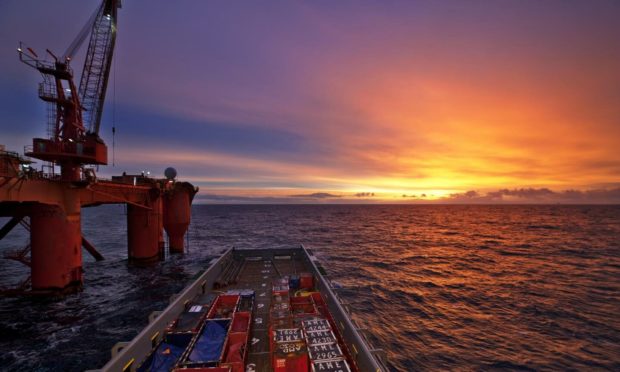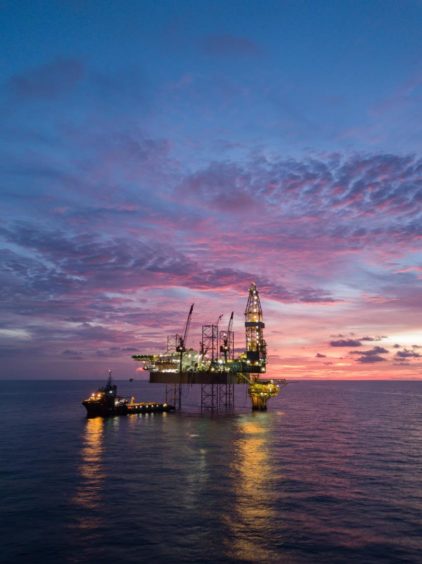
It has been confirmed the upcoming offshore licensing round will kick off “early next month” after ministers gave long-awaited clarity about the UK’s climate compatibility checkpoint.
Approved earlier this month by Prime Minister Liz Truss, industry regulator the North Sea Transition Authority is now moving “at pace” to open the 33rd licensing round, the first since 2020.
It is expected to yield more than 100 permits, and could signal a “resurgence” in UK oil and gas operations.
A window of 90 days will be given for developers to submit their applications, which, if approved, will allow them to search for hydrocarbons.
Additional scrutiny for producers
Details about the upcoming round were published on Thursday directly after the UK Government released the findings of its long-awaited climate compatibility checkpoint consultation.
It adds another level of scrutiny to new oil and gas licences; setting out hurdles they must clear in order to receive approval.
The checklist is designed to tackle the dual challenges of climate change and energy security by ensuring new North Sea projects can go ahead, but that emissions are kept to a minimum.

Securing domestic oil and gas sources is a priority of government, and the NSTA is identifying priority areas with known hydrocarbons, that are close to infrastructure and with the potential to be developed quickly.
It will seek to license these zones ahead of others to ensure new fields can be brought on stream as quickly as possible.
A spokesman for the NSTA said: “Now that the Government has announced the climate compatibility checkpoint outcome, we will move at pace to launch the 33rd licensing round.”
What has changed?
Views were sought on a total of six potential tests – including benefits for the transition and global comparisons – that new licences would have to pass.
Of those six put forward, it has been decided that three will be included in the checkpoint.
International emissions benchmarks will be taken into account, with the government agreeing that “the UK oil and gas industry should be a global exemplar”.
So too will ensuring the sector meets the targets set out in the North Sea Transition Deal (NSTD), including the pledge to cut operational emissions by 50% by 2030.
The status of the UK as a net importer or exporter of oil and gas will also influence whether future licensing rounds are held or not.
More than 50,000 responses
Westminster launched the climate checkpoint sounding call in December 2021, after it was initially proposed in the landmark NSTD, signed earlier that year.
The Department for Business, Energy and Industrial Strategy (BEIS) said it received “very strong engagement” with the initial consultation, which ran until the end of February.
A total of 55,640 replies were lodged by a range of stakeholders, including private citizens, industry bodies and NGOs.
Respondents generally agreed that three principles – evidence-based, transparent, simple – should underpin the checkpoint.
There were also suggestions that equity should be taken into account, given the UK has emitted more than other countries, but government said “ethical considerations are beyond the scope” of the framework.
Checks that didn’t make the cut
Checks that future licences will not be subject to is their support of energy transition technologies, an evaluation of Scope 3 emissions, those arising from the burning of oil and gas, and the world’s production gap.
Ministers gave several reasons for leaving them out, such as a checkpoint being the wrong tool to achieve the aim, or because producers would have limited control over the outcome.
In February, the government’s top advisers on climate change said it “couldn’t give an unequivocal view on the [global] impacts of new UK production”.
The Climate Change Committee (CCC) said that while UK production of oil and gas is generally less carbon-intensive than globally, additional new supplies would support a larger market overall, leading to ongoing oversupply of hydrocarbons.
However the advice came on the same day that Russia invaded Ukraine, sending a shockwave through energy markets and sending prices sky high.
Net exporter by 2040
Outcomes of the consultation will be applied to forthcoming licensing round, a key pillar of the Prime Minister’s plan to turn the UK into a net energy exporter by 2040.
Business and Energy Secretary Jacob Rees-Mogg said: “In light of Putin’s illegal invasion of Ukraine and weaponisation of energy, strengthening our energy security is an absolute priority, and – as the Prime Minister said – we are going to ensure the UK is a net energy exporter by 2040.
“To get there we will need to explore all avenues available to us through solar, wind, oil and gas production – so it’s right that we’ve lifted the pause to realise any potential sources of domestic gas.”
New licences not a ‘short-term’ fix
Since the prospect of a new UK licensing round first emerged, it has attracted a large degree of opposition.
Environmental groups have repeatedly cited the volume of North Sea oil and gas that is sent overseas.
The time it takes for discoveries to begin producing has also been held up as a reason to shelve the process.
Alyson Harding, technical manager, North West Europe E&P, Westwood Global Energy Group, acknowledged that the upcoming round will be far from a quick fix.
She said: “The UK Government has announced that it has reviewed the Climate Compatibility Checkpoint and that a 33rd Offshore Licensing Round would be compatible with the UK climate objectives. It is expected that the opening of the Round will be announced in October, however, this will not be a short-term fix for UK energy security.0
“Westwood analysis shows that for licences awarded since 2002, the average time taken from award of the licence to first production is 7 years (range 2 to 15 years) and requires the drilling of many exploration and appraisal wells to confirm commerciality of discoveries.
“Exploration in the UK has been at an all-time low in the last few years with just 5 wells in 2020 and 4 in 2021, the fewest to complete in any one year since exploration began in the 1960s. Average commercial volumes discovered over the last five years has been low at less than 100 mmboe/year.
“For exploration to make a difference, both activity levels and volumes discovered will need to improve significantly. In 2022, Westwood expects 7 exploration wells to complete, and we currently have visibility of 10 exploration wells that are planned for 2023 as well as a number of appraisal wells.”
Recommended for you


 © Shutterstock / James Jones Jr
© Shutterstock / James Jones Jr © Colin Hattersley
© Colin Hattersley © PA
© PA